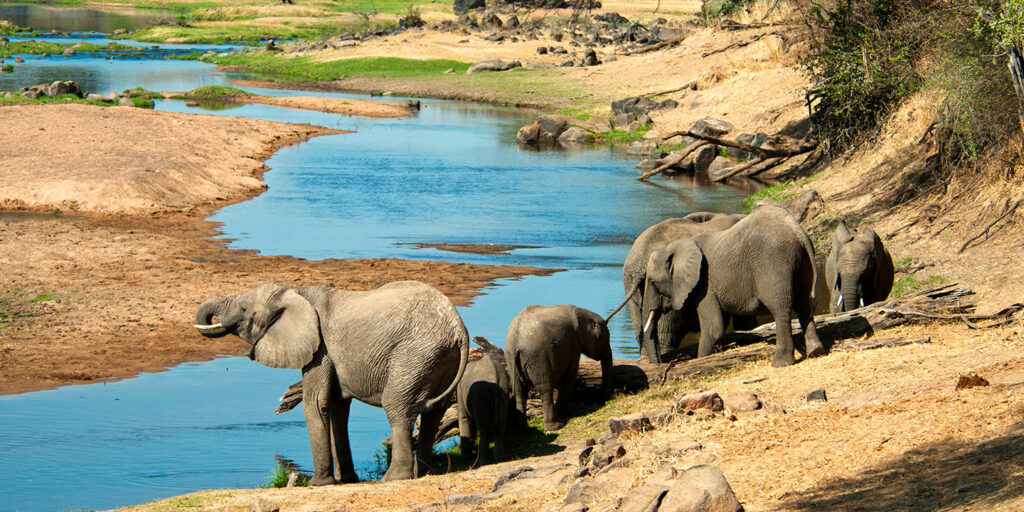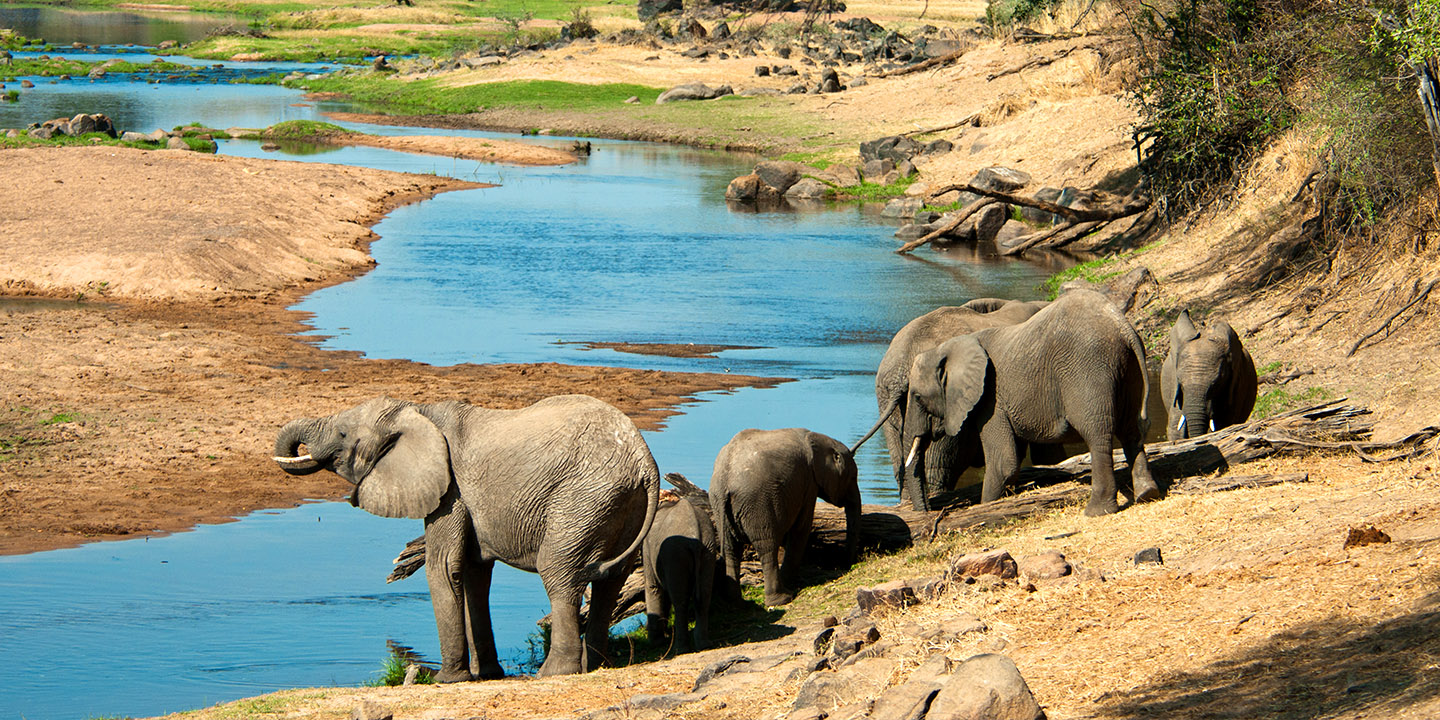
Ruaha National Park in Tanzania is a hidden gem for nature lovers and adventure seekers.
You will discover stunning landscapes, diverse wildlife, and an authentic safari experience that sets Ruaha apart from more famous destinations.
From massive herds of elephants to rare wild dogs, this park is a haven for wildlife enthusiasts.
The park’s vastness and isolated location provide an intimate encounter with nature. You can explore rugged terrains, watch the sun set over the savannah, and engage in sustainable tourism practices that support conservation.
Ruaha offers the chance to experience a safari without the crowds, making it an ideal destination for those seeking tranquility and adventure.
Visiting Ruaha is not just about seeing animals; it’s about immersing yourself in a unique ecosystem.
With the right time of year for wildlife viewing, you are sure to make lasting memories in this spectacular park.
Key Takeaways
- Ruaha National Park offers a unique wildlife experience away from the crowds.
- The park supports sustainable tourism and conservation efforts.
- The best times for wildlife viewing enhance your safari experience.
Diverse Wildlife and Habitats
Ruaha National Park is famous for its incredible variety of wildlife and unique habitats. You can find a mix of savannahs, riverine forests, and woodlands. This diversity supports a wide range of species, making every visit exciting and rewarding.
Notable Predators and Big Cats
In Ruaha, you will encounter some of the largest populations of lions in Africa. Their unique social structure allows you to see them in prides, often resting or hunting together.
Leopards are also common, showcasing their elusive nature as they navigate the trees. You may even spot cheetahs, which are known for their incredible speed and grace. Other notable predators include spotted hyenas and wild dogs, both of which play vital roles in the ecosystem.
Unique Bird Species
Birdwatchers will find Ruaha a paradise. The park hosts over 550 bird species, making it a prime location for bird watching.
Look for the beautiful yellow-billed stork and the striking crested crane. Grey crowned cranes are another highlight, known for their graceful movements and vibrant plumage.
In addition, you might encounter the African fish eagle, with its distinctive call echoing near the rivers. The diversity of birds changes with the seasons, offering a fresh experience with each visit.
Vegetation Zones
Ruaha’s varying landscapes create rich habitats for many species. The park has distinct vegetation zones, including savannah grasslands and acacia woodlands.
Along the riverbanks, you will find lush vegetation, providing vital resources for the local wildlife. These areas support animals such as elephants, giraffes, and various antelope species.
The park is also home to baobab trees, which are iconic to the African landscape. Each zone offers unique opportunities to observe wildlife and appreciate the natural beauty of Ruaha.
Authentic Safari Experience
Visiting Ruaha National Park offers a truly authentic safari experience. You can enjoy guided walking safaris and thrilling game drives, both of which allow you to connect deeply with the wildlife and landscapes.
Guided Walking Safaris
Guided walking safaris are a unique way to explore Ruaha. As you venture into the park on foot, a knowledgeable guide will lead you. This allows for a close-up view of the smaller details of nature, like animal tracks and plants.
Walking safaris let you experience the sounds and smells of the African bush. You may encounter wildlife like elephants or lions, often without the distractions of a vehicle. These safaris typically last several hours and provide insights into animal behavior and ecosystems, making it a memorable part of your trip.
Game Drives
Game drives are a cornerstone of any visit to Ruaha. They allow you to cover large distances and see a variety of wildlife. In an open 4×4 vehicle, you can easily spot animals from a safe distance.
During these drives, you will have the chance to see big game like elephants, leopards, and buffalo. Experienced guides know the best times and locations for sightings. The vast savannahs and the Great Ruaha River create stunning backdrops during your drives. Whether at sunrise or sunset, these moments can be breathtaking.
Sustainable Tourism and Conservation Efforts
Ruaha National Park focuses on sustainable tourism and conservation to protect its unique ecosystem. By getting involved in local efforts, you contribute to the preservation of wildlife and community well-being.
Community Involvement
Community involvement is crucial in Ruaha. The park engages local residents in various initiatives to promote sustainable practices.
Through education programs, locals learn about the importance of wildlife conservation and eco-friendly tourism. Workshops help create jobs in tourism, reducing reliance on harmful activities like poaching.
Additionally, community-based projects support schools and healthcare, fostering goodwill toward conservation efforts. When you visit, your presence helps fund these initiatives and strengthens local economies.
By participating in guided tours, you directly support guides from the community, ensuring they benefit from tourism. This engagement creates a stronger connection between visitors and the local culture.
Wildlife Protection Initiatives
Wildlife protection is a top priority in Ruaha National Park. The park runs anti-poaching patrols to safeguard endangered species.
As a visitor, your entrance fees help fund these operations. Rangers work tirelessly to monitor wildlife and prevent illegal activities, protecting animals like elephants and lions. Ruaha is home to about 10% of the world’s lion population and is a vital conservation area for them.
Programs also focus on habitat restoration, ensuring ecosystems remain healthy for future generations. By participating in eco-tourism, you support these essential wildlife protection initiatives.
Overall, these efforts make Ruaha a model for sustainable conservation practices that keep both wildlife and communities thriving.
Best Time to Visit
Visiting Ruaha National Park offers unique experiences depending on the season. The dry season and wet season each have distinct advantages that can enhance your safari adventure.
Dry Season Advantages
The dry season runs from June to October. During this time, wildlife is easier to spot as animals congregate around water sources. The vegetation thins out, making it simpler to observe the diverse wildlife, including elephants, lions, and various antelope species.
Temperatures are warm, with sunny days that make for great safari conditions. Many lodges remain open and comfortable, providing excellent amenities. This period is regarded as the peak time for game viewing, with visitors often encountering spectacular wildlife interactions.
Additionally, fewer tourists visit during the dry season compared to other popular parks. This means you can enjoy a more intimate experience with nature, enhancing the thrill of your safari.
Wet Season Spectacles
The wet season occurs from November to May. This time offers a different perspective on Ruaha’s beauty, with lush greenery and blooming landscapes. The rains transform the park, creating vibrant scenery and abundant life.
While wildlife can be harder to spot due to the dense vegetation, this is the season for young animals. You may witness fascinating scenes of newborns learning to navigate their environment.
Bird watching is exceptional during this period. Many migratory bird species arrive, and you can see stunning displays of color and diversity. The scenery bursts with life, making it a time of renewal and vibrancy in the park.
Although fewer tourists are present, some lodges may close, so checking availability in advance is important.
Frequently Asked Questions
You may have some questions as you plan your trip to Ruaha National Park. This section covers wildlife viewing, unique features of the park, the best times to visit, guided walking safaris, available accommodations, and conservation efforts.
What wildlife can you expect to see on a safari in Ruaha National Park?
Ruaha National Park is home to a diverse range of wildlife. You can see elephants, lions, leopards, and various antelope species. The park also has many birds, making it a great spot for birdwatchers.
How does Ruaha National Park distinguish itself from other Tanzanian national parks?
Ruaha is one of the largest national parks in Tanzania, spanning over 20,000 square kilometers. Its remote location offers a more secluded experience compared to other parks. The park is less crowded, allowing for better wildlife encounters and opportunities for photography.
What are the best times of year to visit Ruaha National Park for wildlife viewing?
The best time for wildlife viewing in Ruaha is from June to October. During these months, animals gather around the Great Ruaha River, making them easier to spot. The weather is also pleasantly dry, which enhances the safari experience.
Can visitors participate in guided walking safaris within Ruaha National Park?
Yes, guided walking safaris are available in Ruaha National Park. These safaris offer a unique way to experience the landscape and wildlife. You can learn about flora and fauna from experienced guides while walking in a safe environment.
What accommodations are available for tourists within or near Ruaha National Park?
There are various accommodations in and around Ruaha National Park. Options range from luxury lodges to more budget-friendly camps. Many places offer meals and guided tours to enhance your safari experience.
What conservation efforts are in place at Ruaha National Park?
Conservation efforts in Ruaha focus on protecting its unique wildlife and habitat.
Programs are in place to combat poaching and involve local communities in conservation.
These efforts help ensure the park remains a pristine environment for future visitors.

Leave a Reply